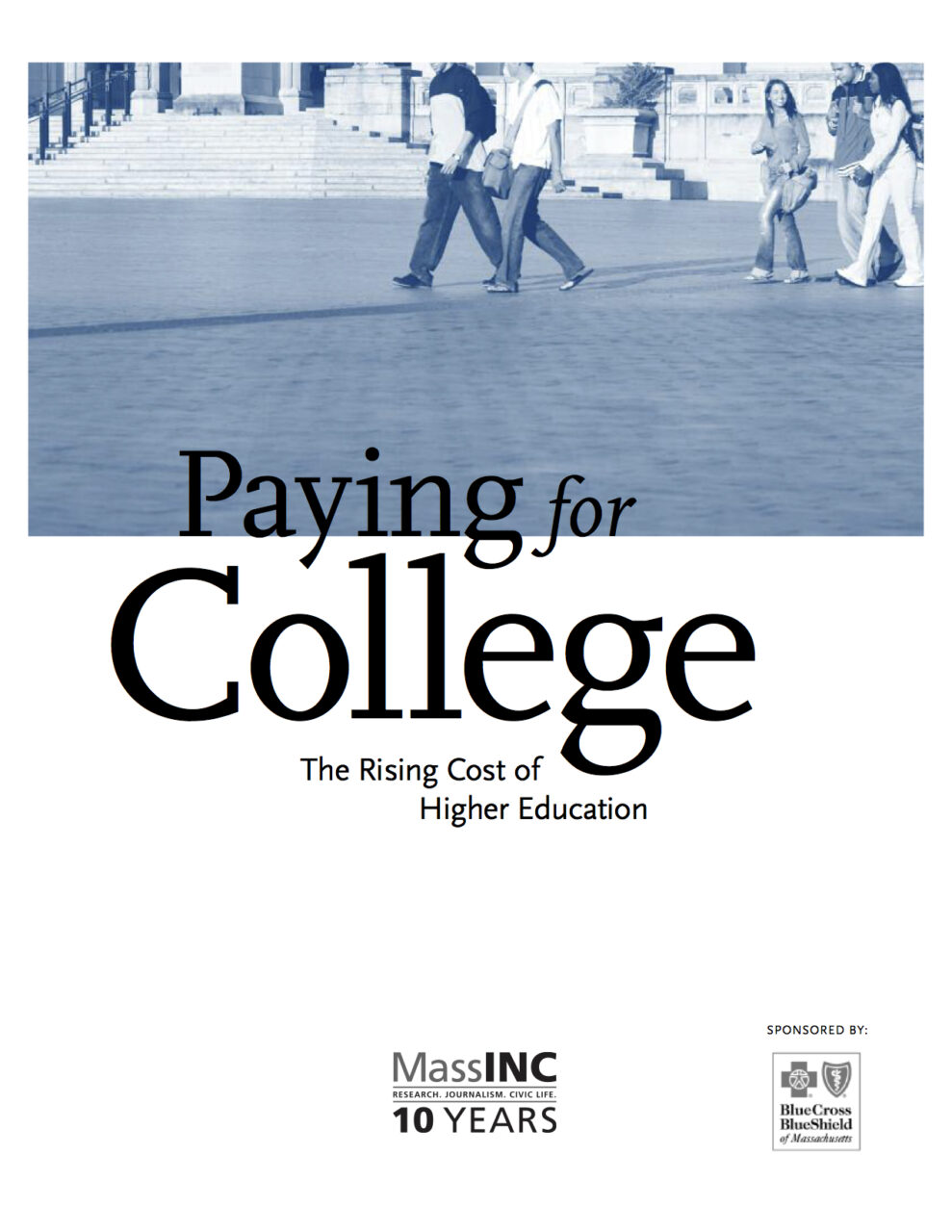At the same time that a college education has become the ticket to the middle class, college has become less affordable. The situation in New England is worse than it is nationally. Even though incomes are higher in the region, families are likely spending a higher share of their income to pay for college. In 2003-04, families with students attending a community college in New England spent 17 percent of their annual income to cover the costs of college. Families are stretching even more to attend a public four-year college in the region, spending 21 percent of their income. Private colleges are the most expensive, requiring that families spend a stunning 33 percent of their income.
Although family incomes and grant aid have increased over the past decade, they have not increased enough to offset the increases in tuition prices. As a consequence, more students and parents are taking out loans to finance their college education, and the amount of debt that students are carrying has increased significantly during the past ten years. The increase in loans has shifted a greater amount of risk to students and their families, and the consequences of this shift deserve more public discussion.
While the long-term value of a college degree may well justify the cost and accompanying debt, a substantial number of students who start college leave without earning a degree. Many, if not most, college dropouts have debt that still must be repaid, without the advantages of a college degree. Thus, a renewed focus on getting students through college and not just into college is needed.
In Massachusetts, there has recently been increased attention to state funding of public higher education. However, unless the state government is prepared to make an open ended commitment to higher education—or students and families are willing to assume even greater amounts of debt—the expenditures side of the ledger must be analyzed anew in order to look for opportunities for greater cost savings.
The challenges around affordability are of national concern, but they deserve particular attention in Massachusetts and New England. The region’s community colleges and private four-year colleges are less affordable than those nationally. While our public four-year colleges cost about the same as those nationally, the decline in affordability has been much more steep, and if similar trends continue, they too will be less affordable in short order. In a region already struggling with high cost of living and the out migration of young families, the high cost of college should be of concern to policymakers.
